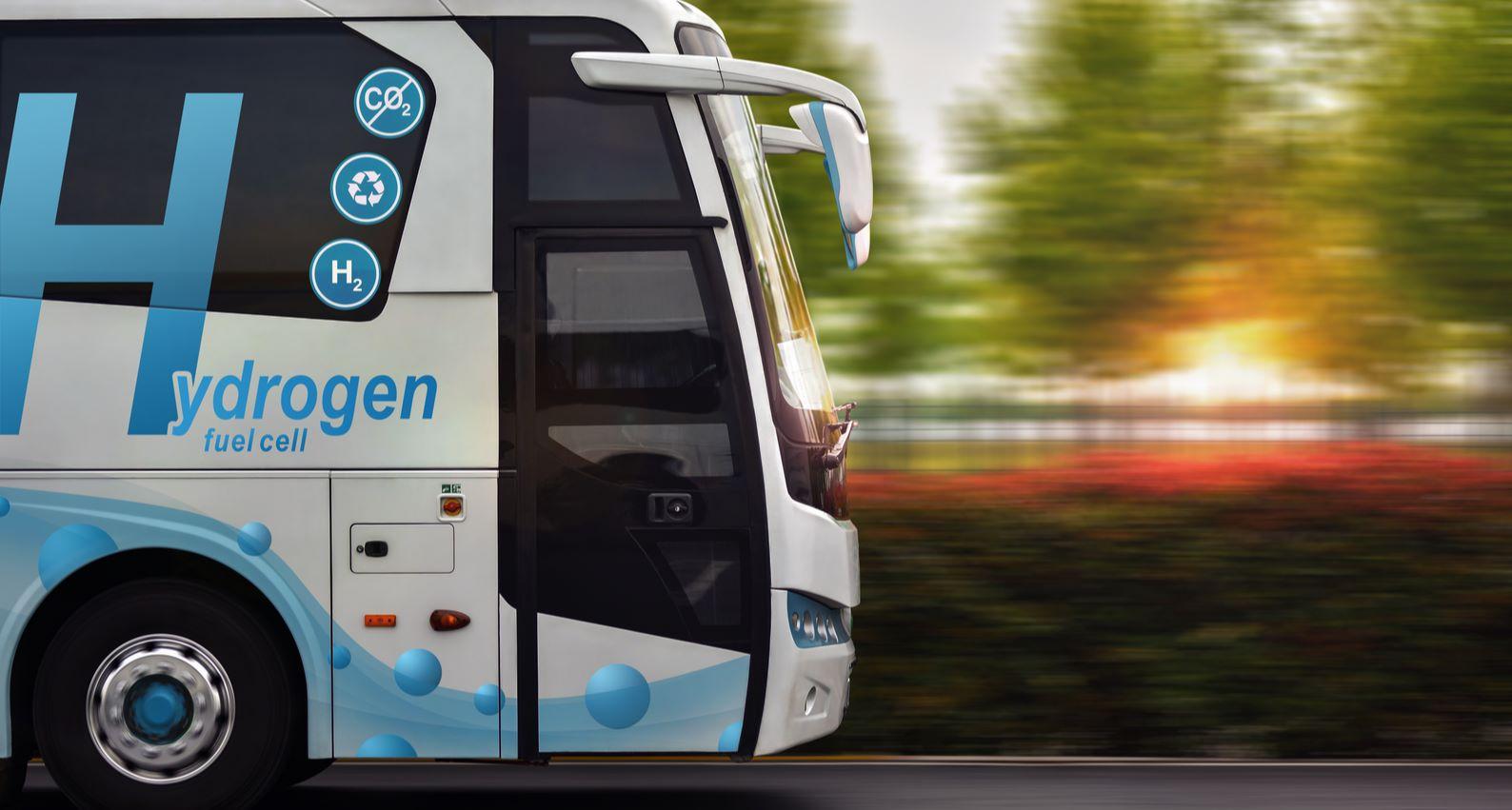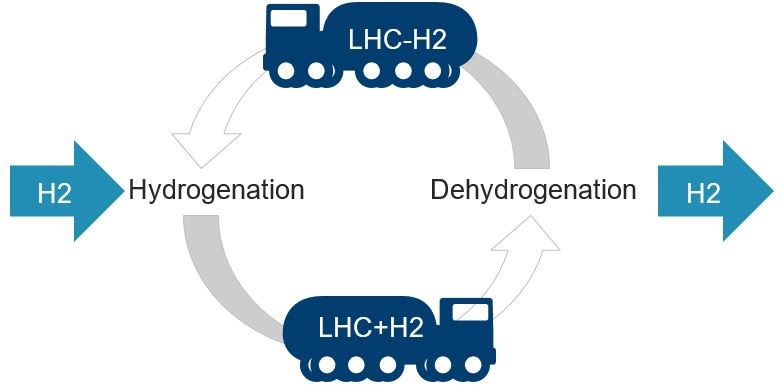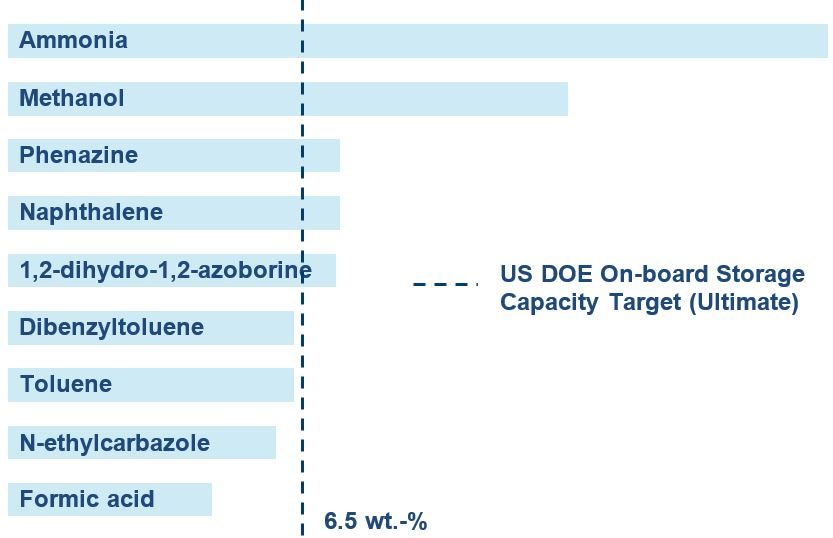Hydrogen Economy - Are Liquid Hydrogen Carriers the answer?
Published on 20 Jan, 2020

Hydrogen, despite being the smallest and the lightest of all elements, is difficult to transport. Amid its rising popularity as an alternative fuel, the logistics of delivery and storage pose a concern. Various methods are used for delivery, of which some are costly or complex. Liquid hydrogen carriers (LHCs) could be the solution to the logistics problem.
Hydrogen (H2) is the smallest and lightest element. On combustion with oxygen, it produces water. In the growing quest to curb CO2 emissions and greenhouse effect, H2 has emerged as the fuel of future. The volumetric density of H2 is only 0.00075 kg/gallon (at 1 atm pressure and 0°C) while that of gasoline is 2.75 kg/gallon in the same conditions. This exceptionally low density is the biggest hurdle in the delivery and storage of the gas. Currently, H2 is transported either in the gaseous or liquid form via tube trailers, pipelines or ships. Both modes of transport are energy-intensive and expensive. Gaseous H2 needs to be compressed to 700 bar, whereas liquid H2 needs to be cooled to cryogenic temperatures, an expensive process. In the US, the average retail price of H2 ($5.60/gallon) was double that of gasoline ($2.72/gallon) in 2018.
To speed up the adoption of hydrogen, the cost associated with delivery needs to be cut down. Various novel carriers were proposed for this, such as MOFs, hydrides and liquid carriers. High costs associated with MOFs and slow reaction kinetics of hydrides paved the way for liquid hydrogen carriers (LHCs) as a preferred method to transport H2.
About liquid carriers
|
Liquid carriers are built to store H2 in a chemical state different from molecular hydrogen. As a result, it can be transported conventionally without any compression or cryogenic conversion. At the delivery sites, H2 is extracted from these carriers for usage. The liquid carrier is then recycled and prepared for another delivery. Thus, liquid carriers are a sustainable solution for delivery of H2 in bulk. Liquid organic hydrogen carriers (LOHCs), a subset of liquid carriers, have proved to be promising for the transportation and storage of H2. The concept of LOHCs is based on hydrogenation and dehydrogenation reactions. They are also less energy-intensive as the heat generated during hydrogenation can be used for dehydrogenation. |
Fig.1: LHCs transport cycle |
The only disadvantage with liquid carriers, however, is the extra purification required after extracting H2 which adds to the overall delivery cost.
Dibenzyltoluene and toluene winning the race?
|
The liquid carriers currently being researched are ammonia, methanol, toluene, N-ethylcarbazole, dibenzyltoluene, formic acid, naphthalene, 1,2-dihydro-1,2-azoborine and phenazine. Based on parameters such as reaction temperatures, process design, energy demand, scalability, availability and storage capability, the prospects for dibenzyltoluene, N-ethylcarbazole, toluene and methanol are good. In terms of cost, methanol, dibenzyltoluene and toluene seem the most viable options. The technology related to dibenzyltoluene and toluene is significantly mature. If the raw material cost associated with N-ethylcarbazole comes down and the scale of methanol synthesis increases, these chemistries have the potential to compete with the existing mature LOHCs. |
Fig.2: Storage Capacity of LHCs vs US DoE Target (wt.-%) |
Grey, blue or green hydrogen, it works for all
Grey hydrogen is the H2 produced from conventional methods such as steam methane reforming (SMR) with tons of CO2 emissions. Blue hydrogen is produced via conventional methods with addition of CO2 capture technologies. Recently, green hydrogen, produced by electrolysis of water using renewable energies (wind or solar), is gaining momentum. This method is used mostly for on-site production of H2. Bulk H2 can be produced by scaling up this method but that would require feasible meteorological conditions (high winds or abundant sunshine). Places favoring these conditions might be remote and would require infrastructure for delivery of the H2 produced.
Liquid carriers loaded with H2 have appreciably same volumetric density as gasolines; therefore, the infrastructure currently used to transport gasoline can also be used to transport H2. The only addition would be units for extraction of H2 from liquid carriers at the delivery sites. Thus, the existing infrastructure can be utilized for faster adoption of H2 technology.
Active entities
Japanese giant Chiyoda Corporation undertook the first ever bulk shipment of H2 using its SPERA Hydrogen technology based on toluene liquid carriers.
German company Hydrogenious LOHC Technologies GmbH has started commercializing its dinbenyltoluene-based technology for storing and transporting H2. It has also collaborated with Framatome’s energy storage brand Covalion, which provides LOHC-based solutions. H2-Industries SE, another German company, is also active in this domain.
French company HySiLabs uses a regenerating siloxane-based carrier for transportation and storage of H2. Siemens is exploring the possibility of using its Green Ammonia technology to store and transport H2.
Supply chain of future

Fig.3: Supply chain in H2 economy (Illustrative)
Outlook
M&As, collaborations, and government policies suggest that the hydrogen revolution is imminent. Liquid hydrogen carriers are relatively free of existing problems related to safety (compressed H2) and boil-offs (cryogenic H2). With further innovation and development, liquid carriers can be a game-changer in providing affordable hydrogen and boosting the hydrogen economy.


